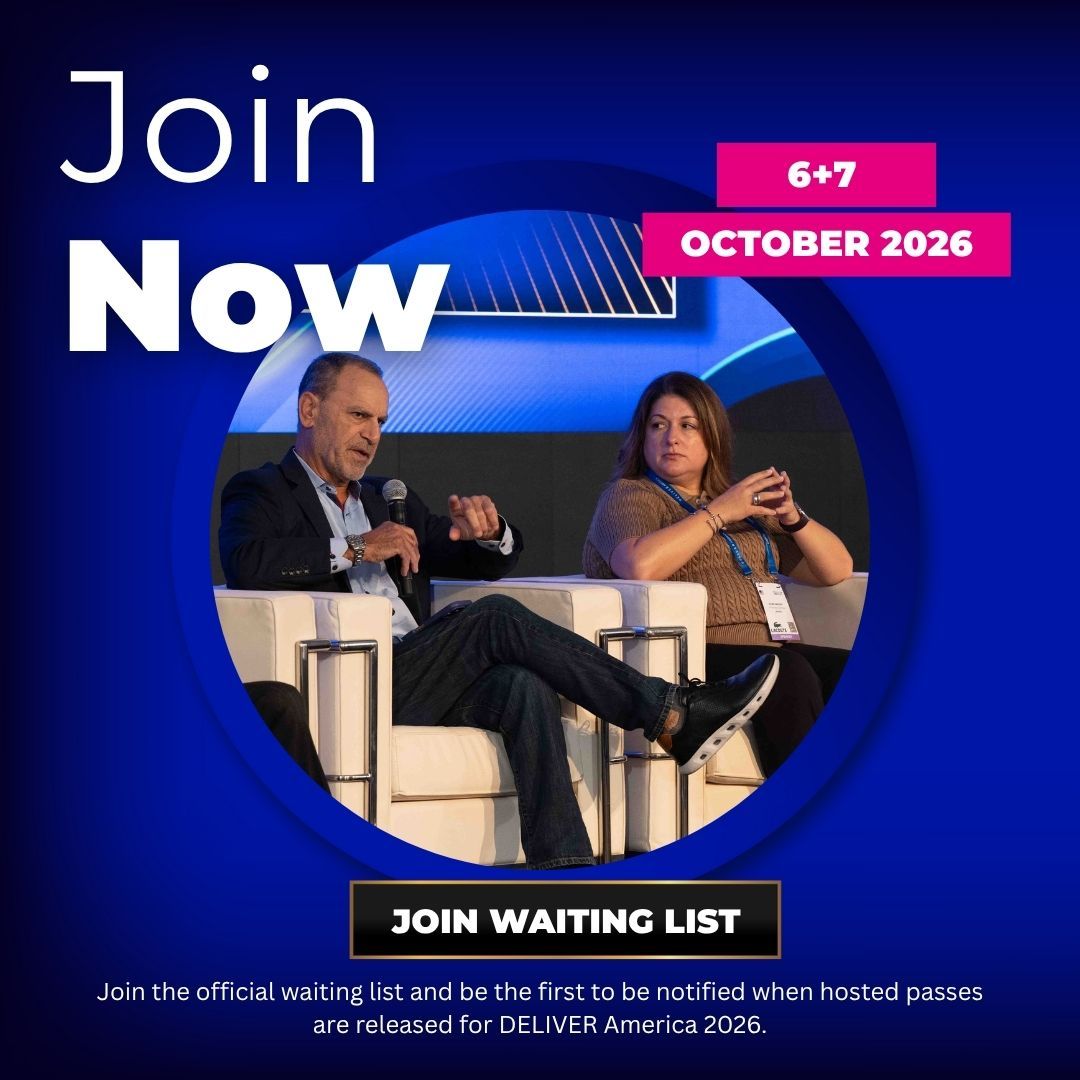Bonus Insights: Gopal Pal – Managing Partner, Nova Cygnus Advisory
)
Dr Gopalendu Pal is Managing Partner at Nova Cygnus Advisory, and a senior strategy and supply chain operations leader with 15+ years of professional experience. Dr Pal is passionate about building and leading high-performance teams, and delivering innovative, state-of-the-art solutions to complex problems.
He is the author of more than 30 book chapters and peer-reviewed articles in international journals, and has delivered more than 20 keynote speeches worldwide. Dr Pal holds board of director and advisory board positions in many firms, and acts as a startup mentor in globally reputable accelerator programs.
WATCH Gopal’s DELIVER America 2023 Keynote: Managing Inventory: A Tale of Smart Adaptability in Uncertain TimesDELIVER:
Could you start by telling us a little more about your concept of inventory management as a mindset, rather than just a process?
Gopal Pal:
This is actually a fantastic thing. Supply chain could be more like a technology company, right? The technology industry can be very, very agile; we can turn it like a speedboat, quickly experiment, iterate, develop, launch, and test on the market. If it fails, we can immediately go back and do something new. In such a short timeframe, it's mind boggling.
However, in supply chain, there are international connections, dependency across multiple suppliers, multiple players. And when uncertainty like COVID, or the Ukraine war, happens, we need to pivot really quickly, and we just can't. Supply chain is like an aircraft carrier in uncertain times; we do have to move it much faster. So instead, we should think about it as a fleet of speedboats. Working together gives the impression of this big thing. But ultimately, they are just small speedboats working in harmony, that can turn fast. We need to think about the supply chain differently, by breaking it up into more meaningful, valuable pieces.
DELIVER:
How can retailers manage the antagonism between ‘just in time’ and ‘just in case’? How do they negotiate these very complicated and shifting patterns, especially over the holiday season? Or sudden product crazes like a must-have Christmas toy?
Gopal:
Quite often, those crazes are sometimes an outcome of marketing. Let's start with the Barbie movie. I recently met with the SVP of supply chain at Mattel. And even before Barbie came out, she had a plan about how she was going to promote Mattel, and the Barbies, and how the whole supply chain was actually taking care of all of the things in the backend.
But you also don’t know which things are going to take off. I remember a woman posted a video on social media that she was in a car accident, and the car was completely totaled. Luckily, she was fine. And there was one other thing in the entire car that was unscathed: a Stanley Quencher Tumbler. Ater that, every retailer sold thousands and thousands of Stanley tumblers. So those are the things you just can't plan for, because that happens in a split second. But that’s where building that relationship with the supplier, about how to manage that surge, is so important. Hard to do, but very important.
Every retail company has social media scraping or crawling algorithms; we try to understand what is trending and not trending. When things turn around in one day, that's where you have to be creative, and rely on your supplier partnership. There is nothing in technology methods that will give you any kind of indication, other than really monitoring social media.
In terms of seasonality: if you hold less inventory and then a huge snowstorm hits, now you cannot deliver that small amount of inventory to the store at the right time, or get the right inventory from the supplier. What I suggest is not to look at just the seasonality of it and how customers buy. Every single retail industry has suppliers from all across the globe. So what kind of other events are happening there? And inflation, how is that changing what kind of policies and tariffs and regulations we expect?
Based on those facts, decide how you're going to get that inventory and spread it out over the network, especially if you have a large supply chain; you have multiple buildings, you don't have one distribution center. Decide what inventory you're going to store, and where. And now if you really plan the capacity, you have that mindset that you really take care of the entire supply chain network’s bandwidth capacity, and store the right stuff in the right places. It’s like a squirrel burying nuts for the winter. But they're just very strategic about where those nuts are buried!
DELIVER:
How far is AI going to be able to mitigate the unpredictable? And how do you make sure that AI bias is not built into your supply chain?
Gopal:
I typically call it garbage in, garbage out: it depends on how good the data is. I started my career in technology, and I never thought I would see a day where I could process this much data in seconds, or milliseconds. But it’s the quality of that data that’s extremely important. As we know, our brains are actually very bad at multitasking. And that's why AI is super helpful, because it gives you that bandwidth to make decisions.
Ultimately it depends on who is driving this model, taking care of the data, and understanding whether the results actually make sense. That's where the human portion will always be there, and why having the right talent is crucial. I think a lot of companies try to use AI as a black box. ChatGPT is a global model and has lots of good data, but also fairly limited sets of open source data. And that means if somebody continues to post that the Earth is flat, ChatGPT will eventually tell you that the Earth is flat.
So we don't want that. That's why building that talent pool within the company is so important, with experts who have subject matter expertise, so they can use those models and make that extremely elevated decision at a low cost.
DELIVER:
As we approach 2024, what are some of the trends that supply chain managers need to be planning for?
Gopal:
They need to plan for what their overall talent pool is going to look like: supply chain needs a transformation from that mindset of the aircraft carrier to the fleet of speedboats. This means breaking that organization up into meaningful manageable chunks, and understanding how the talent would look for each of those things.
I am yet to meet somebody with a PhD in supply chain, because it’s considered somewhat of a blue-collar job. That’s funny to me, because it's such a massive, complicated industry. In that high-level decision making, there is a very high level of talent required. However, you also need lots of people that are typically at the middle of the curve; the people working in distribution centers, hourly-wage workers, and really build out that talent pool requirement, so that you don't have to respond in real time, because you have a plan.
You're only as good as your plan. It doesn't necessarily mean the plan is set in stone. But have a plan. And also have that creative capacity to completely iterate, fail, iterate: like a Silicon Valley entrepreneur.


